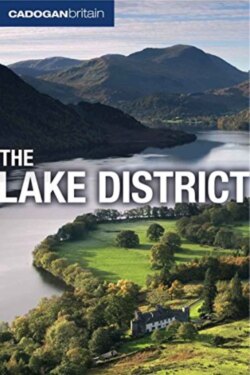Читать книгу Britain: The Lake District - Vivienne Crow - Страница 31
На сайте Литреса книга снята с продажи.
The Victorians and Beyond
ОглавлениеThe Lake District’s literary tradition didn’t end with the demise of Wordsworth in 1850; writers continued to be drawn to the area – as they are today. John Ruskin, born in London in 1819, first visited the Lake District when he was five years old. The poet-cum-artist-cum-social critic, made his home at Brantwood on the shores of Coniston Water in 1872 and lived there until he died in 1900 (see here). One of the great and most influential thinkers of his age, he wrote more than 250 works on subjects as diverse as art history, geology, mythology, ornithology, literary criticism and pollution. His ideas had a profound effect on the early development of the Labour Party in Britain and his many fans included Leo Tolstoy, Marcel Proust and Mahatma Gandhi, who translated Ruskin’s Unto This Last, a damning critique of capitalist economics, into Gujarati.
Moving, some might say, from the sublime to the ridiculous, another important Lake District literary figure is the children’s book writer and illustrator Beatrix Potter (see here). Tourists from all over the world, particularly Japan, where Potter’s books are used to teach English, flock to the National Park to join the Potter pilgrimage, visiting her home, her farms and the locations that inspired her work. Although born in London, Potter’s love of the countryside stemmed from her childhood holidays in the Lakes. She eventually moved to the area and used the royalties from her books to buy farms. Although she is remembered mostly for books such as The Tale of Peter Rabbit and The Tale of Mrs Tiggy-Winkle, she spent most of her adult life as a farmer and conservationist. In particular, she became passionate about Herdwicks, the hardy sheep that graze the high fells. It is partly down to her and the efforts of her friend Canon Hardwicke Rawnsley (see here), co-founder of the National Trust, that the breed still exists today.
Another children’s writer who made his home in the Lake District was Arthur Ransome, best known for Swallows and Amazons, published in 1930. The first in a series of books about childhood adventures, it tells the story of the Walker children, who have a dinghy called Swallow, and the Blackett youngsters, who sail Amazon. It is the school holidays and the Walkers are staying on a farm near a lake, while the Blacketts live on the opposite shore. The children meet on an island in the middle of the lake, and have a series of adventures. The settings used by the writer combine elements of both Coniston Water and Windermere. There is much debate among Ramsome aficionados as to whether Wildcat Island is Blake Holme on Windermere or Peel Island on Coniston Water.
Peel Island also features in William Gershom Collingwood’s Thorstein of the Mere: A Saga of the Northmen in Lakeland, first published in 1895. This was one of Ransome’s favourite childhood books, and the two men later became friends. Collingwood, who moved to the Lake District after a brilliant academic career at Oxford, was a pupil of Ruskin, and became his secretary in 1881.
New Zealand-born Hugh Walpole wrote the Herries Chronicle while he was living near Derwent Water. The four novels, set in north Cumbria, tell the story of the Herries family from the 18th century to the Depression of the 1930s. Walpole lived in Cumbria from 1924 until his death in 1941. His home, Brackenburn, received many literary visitors including J. B. Priestley, Arthur Ransome and W .H. Auden.
